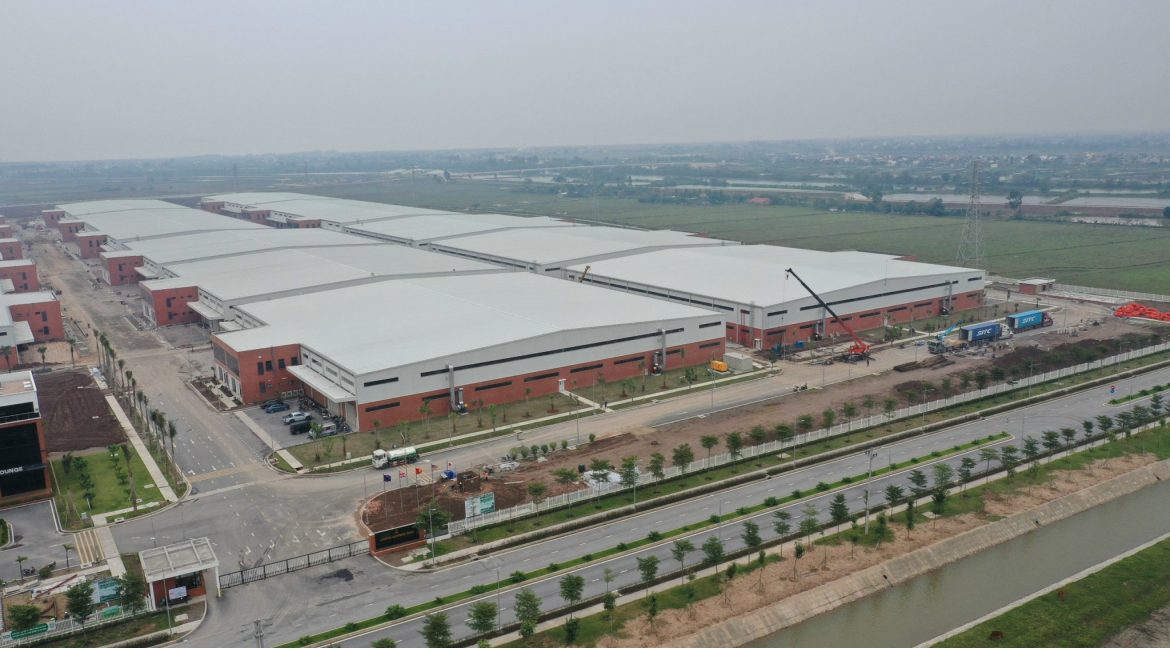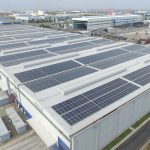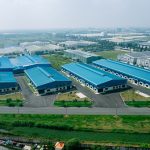Table of Contents
- 1 The Cost of Renting Factory
- 2 Why Consider Renting a Factory in Vietnam?
- 3 Key Factors Affecting the Cost of Renting Factory Spaces in Vietnam, China, and Thailand
- 4 1. Factory Rental Prices in Vietnam vs. China and Thailand: A Detailed Comparison
- 5 2. Labor Costs and Availability: A Key Factor in Factory Rent
- 6 3. Infrastructure and Logistics: The Hidden Costs of Factory Rentals
- 7 4. Government Incentives and Regulatory Environment
- 8 5. Future Trends in Factory Rental Prices in Vietnam, China, and Thailand
- 9 Conclusion: Why Vietnam Offers the Best Value for Renting Factory Spaces
The Cost of Renting Factory
The Comprehensive Guide to Factory Rental Costs in Vietnam Compared to China and Thailand: Key Insights for Business Success in Southeast Asia”
When considering expanding your business operations in Southeast Asia, one of the most important decisions you will face is determining where to rent a factory. The cost of renting a factory space can significantly affect your overall operational expenses, which is why understanding the rental dynamics in various countries like Vietnam, China, and Thailand is crucial. In this article, we will explore the cost of renting factory spaces in Vietnam compared to China and Thailand, highlighting the factors that influence rental prices, the benefits of each location, and why Vietnam offers an exceptional opportunity for businesses in 2025.
Why Consider Renting a Factory in Vietnam?
Vietnam has rapidly become a manufacturing powerhouse in Southeast Asia. With its strategic location, competitive labor costs, and improving infrastructure, Vietnam offers significant advantages for businesses seeking affordable and efficient factory spaces. Compared to its neighbors, Vietnam presents a compelling case for foreign investors who want to minimize operating costs while benefiting from a growing economy.
Key Factors Affecting the Cost of Renting Factory Spaces in Vietnam, China, and Thailand
Understanding the cost structure of renting factory spaces is key to making an informed decision. Several factors contribute to the overall cost of renting a factory, including the location, quality of facilities, labor costs, infrastructure, and government incentives. Let’s break down these factors for Vietnam, China, and Thailand.
1. Factory Rental Prices in Vietnam vs. China and Thailand: A Detailed Comparison
Factory rental prices are one of the most critical aspects of setting up a business, especially for companies looking to minimize expenses. Vietnam’s factory rental prices are more affordable than both China and Thailand, especially in key industrial areas like Ho Chi Minh City, Binh Duong, and Hai Phong.
Factory Rental Costs in Vietnam
-
Cost Range: In Vietnam, factory rental prices typically range from $3 to $8 per square meter per month. The price varies based on the location, quality of the factory, and proximity to industrial hubs like Ho Chi Minh City and Hanoi.
-
Best Locations for Rentals: Industrial zones near Ho Chi Minh City, Hanoi, Binh Duong, and Dong Nai are some of the most sought-after locations. These areas offer not only competitive rental rates but also excellent infrastructure, making them ideal for businesses seeking affordability without compromising quality.
-
Additional Costs: Beyond rent, there are often additional costs for utilities, maintenance, and taxes. Some industrial parks in Vietnam include these expenses in the rental price, while others charge separately, so it’s important to clarify these details upfront.
Factory Rental Costs in China
-
Cost Range: Renting a factory space in China can cost anywhere from $6 to $15 per square meter per month, depending on the region. Coastal areas like Shanghai, Shenzhen, and Guangzhou, which are major industrial hubs, tend to have the highest rental prices.
-
Market Dynamics: While China offers extensive infrastructure and a highly skilled labor pool, the cost of renting factory spaces is significantly higher, particularly in its largest cities and industrial zones. Even in inland areas, factory rents can still be more expensive than in Vietnam.
-
Rent Variability: Factory rental prices in China can vary based on whether you are leasing in a Special Economic Zone (SEZ), which may offer tax incentives and benefits to foreign investors.
Factory Rental Costs in Thailand
-
Cost Range: Thailand’s rental prices range from $4 to $10 per square meter per month. Like China, the rental costs are higher near Bangkok and Chonburi, which are major industrial areas. Areas farther from the capital tend to have more affordable rates.
-
Factors to Consider: Thailand’s rental prices are competitive in the region, but they still come with some operational challenges. While the government offers incentives for businesses in established industrial zones, such as the Eastern Economic Corridor (EEC), factory rents tend to be slightly higher than in Vietnam.
2. Labor Costs and Availability: A Key Factor in Factory Rent
While rental prices are important, labor costs play a critical role in overall operational expenses. Vietnam’s labor costs are among the lowest in Southeast Asia, making it an attractive destination for businesses looking to minimize operational overhead.
Labor Costs in Vietnam
-
Affordable Workforce: Vietnam’s labor costs are significantly lower than those of China and Thailand, with wages for factory workers typically being 30% to 50% cheaper than in China. This makes Vietnam particularly appealing for labor-intensive industries, such as textiles, apparel, and electronics assembly.
-
Skilled Labor Availability: Vietnam has a rapidly growing pool of skilled workers, especially in fields like electronics, textiles, and engineering. This combined with low labor costs creates a strong incentive for businesses to establish operations in the country.
Labor Costs in China
-
Rising Labor Costs: In contrast, labor costs in China have been steadily rising, particularly in coastal regions. While China still offers a vast labor pool, the cost of skilled labor in major cities like Shanghai and Shenzhen can be significantly higher than in Vietnam.
-
Highly Skilled Workforce: China continues to lead in terms of the availability of skilled workers, particularly in industries like electronics, automotive manufacturing, and robotics.
Labor Costs in Thailand
-
Competitive but Higher than Vietnam: Thailand offers a competitive labor market, but labor costs are generally higher than in Vietnam. While wages in Thailand are more affordable than in China, they still tend to exceed those in Vietnam, making it a less cost-effective choice for labor-intensive industries.
3. Infrastructure and Logistics: The Hidden Costs of Factory Rentals
Vietnam has made significant strides in improving its infrastructure, especially in key industrial zones. However, when compared to China and Thailand, the cost of operating a factory in Vietnam can also be influenced by the logistics and transportation infrastructure.
Vietnam’s Infrastructure and Logistics
-
Strategic Location: Vietnam benefits from its strategic location in Southeast Asia, with access to key international shipping routes. Ports like Hai Phong, Da Nang, and Ho Chi Minh City provide excellent access to both domestic and international markets, making it easier to import and export goods at a lower cost.
-
Improving Infrastructure: Although Vietnam’s infrastructure is still developing in some areas, the government is investing heavily in transportation, utilities, and technology. This makes Vietnam a cost-effective choice for businesses looking to reduce logistics expenses.
China’s Infrastructure
-
Top-Tier Logistics: China has the most advanced infrastructure in the region, with world-class ports, roads, and airports. However, this comes at a higher cost. While logistics may be more efficient, transportation expenses tend to be higher in China due to the longer distances between manufacturing hubs and international shipping lanes.
Thailand’s Infrastructure
-
Solid Infrastructure: Thailand offers reliable infrastructure, especially in industrial zones near Bangkok and Chonburi. However, it lacks the same level of international ports and shipping routes as Vietnam, which could lead to slightly higher logistics costs when compared to Vietnam’s coastal advantage.
4. Government Incentives and Regulatory Environment
The regulatory environment and government incentives are essential considerations when renting factory spaces in Vietnam, China, and Thailand.
Government Incentives in Vietnam
-
Tax Breaks and Incentives: Vietnam offers various incentives to foreign investors, including tax holidays, reduced corporate tax rates, and land lease discounts in industrial parks and SEZs. These incentives significantly reduce the overall cost of setting up and operating a factory.
-
Foreign Investment-Friendly Policies: The Vietnamese government has streamlined the process for foreign businesses to enter the market, making it easier to rent factory spaces and establish operations. The legal framework is clear and transparent, providing foreign investors with more predictability and security.
Government Incentives in China
-
Special Economic Zones (SEZs): China offers tax benefits and other incentives in its SEZs, particularly in regions like Shanghai and Shenzhen. However, navigating the regulatory landscape in China can be more complex compared to Vietnam, potentially leading to additional administrative costs.
Government Incentives in Thailand
-
Tax Incentives: Thailand offers tax incentives for businesses in key industrial zones like the Eastern Economic Corridor (EEC). While the incentives are attractive, they are not as extensive or easy to access as those in Vietnam, where the process is generally more straightforward.
5. Future Trends in Factory Rental Prices in Vietnam, China, and Thailand
As we move into 2025, factory rental prices in Vietnam are expected to remain stable, while both China and Thailand may experience rising costs due to increased demand.
Vietnam’s Future Outlook
-
Stable Rental Prices: Vietnam’s industrial real estate market is expected to continue offering affordable factory spaces, with rental rates remaining competitive compared to China and Thailand. The country’s ongoing infrastructure improvements and foreign investment incentives should contribute to its attractiveness as a manufacturing destination.
China and Thailand’s Future Outlook
-
China’s Rising Costs: With increased demand and limited availability in key industrial regions, factory rental prices in China are expected to rise in the coming years, particularly in high-demand areas like Shanghai and Beijing.
-
Thailand’s Competitive Edge: Thailand is likely to maintain its competitive position in terms of cost, but with the potential for gradual increases in rental prices as the economy grows and industrial zones become more developed.
Conclusion: Why Vietnam Offers the Best Value for Renting Factory Spaces
In conclusion, the cost of renting factory spaces in Vietnam remains highly competitive compared to China and Thailand, making it an ideal choice for businesses seeking to minimize operational costs. With affordable rental prices, low labor costs, strategic location, government incentives, and improving infrastructure, Vietnam offers a unique advantage for foreign investors looking to establish manufacturing operations in Southeast Asia.
By choosing Vietnam for your factory rental needs, you can capitalize on a cost-effective environment that is conducive to long-term growth and profitability. Whether you are a small startup or an established enterprise, renting a factory in Vietnam offers the potential for significant savings and increased efficiency in your operations.



